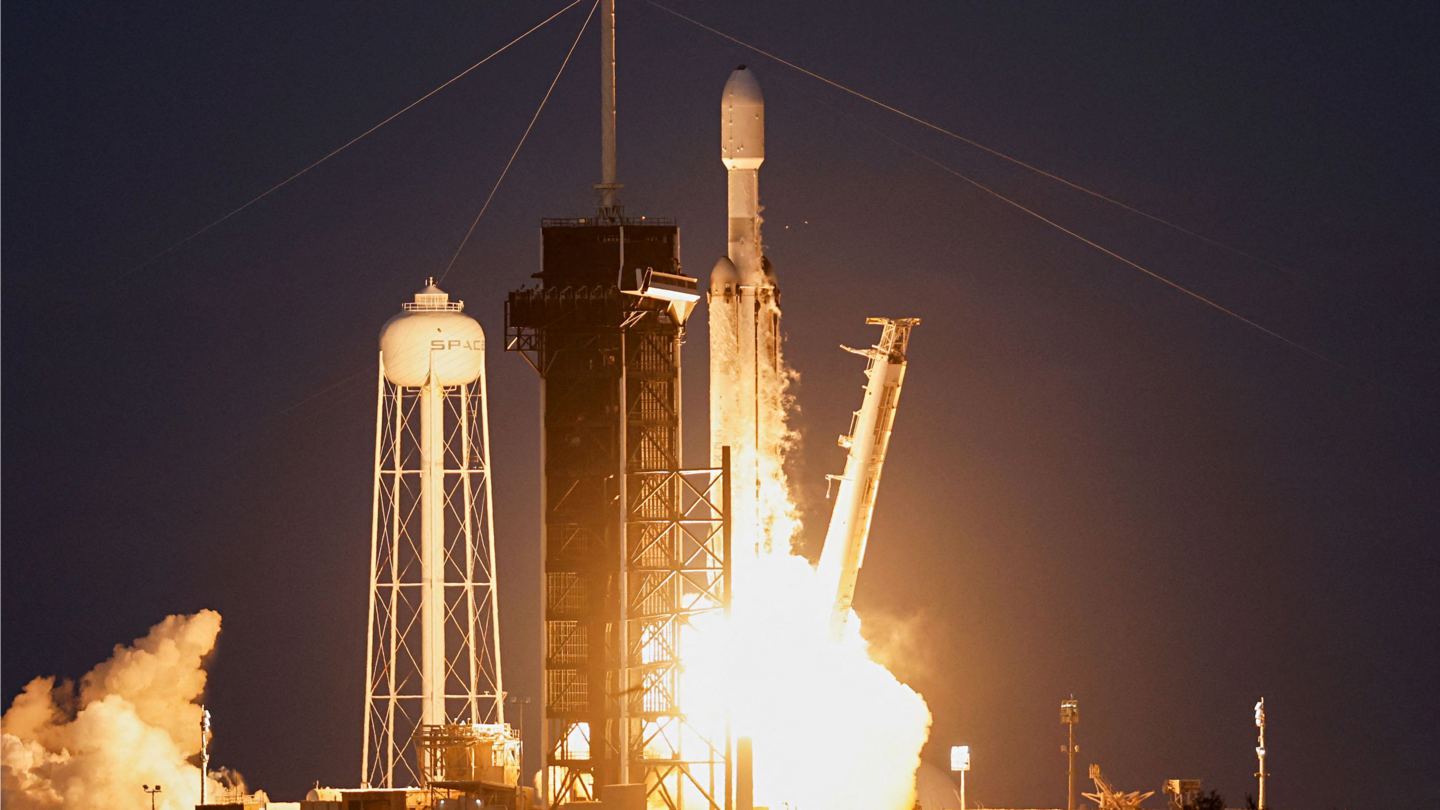
SpaceX launches Falcon Heavy; kicks off classified Space Force mission
What's the story
SpaceX has successfully launched the Falcon Heavy to carry out US Space Force's classified mission USSF-67. The rocket took off from pad 39A at NASA's Kennedy Space Center at 5:56 pm EST on January 15 (4:26 am IST, today). Falcon Heavy carried a communications satellite (CBAS-2). A payload carrier (LDPE-3A) with five technology demonstration satellites from Space Force's sub-departments, was also onboard.
Context
Why does this story matter?
The Falcon Heavy is the most powerful operational rocket in SpaceX's arsenal. Since its debut in 2018, the rocket has now completed its fifth flight. The USSF-67 is the Space Force's first national security mission of 2023, and the second launch related to national security to be carried out by Falcon Heavy, following the USSF-44 mission which took place on November 1, 2022.
Details
Falcon Heavy packs 27 Merlin engines
The Falcon Heavy left the grounds of Kennedy Space Center (KSC), arching to the east over the Atlantic Ocean. The gigantic rocket generated more than five million pounds of thrust from its 27 Merlin engines, which powered its twin strap-on boosters and the central core. The Falcon Heavy also consists of three modified first-stage boosters sourced from the Falcon 9.
Stages
The reusable boosters landed successfully at Cape Canaveral
The first stage of the Falcon Heavy carried reusable boosters, that fired for 2.5 minutes. Eight minutes later, they flew themselves back and landed in a synchronized side-by-side manner, safely touching down at the Cape Canaveral Space Force Station (next to KSC). It was the second landing for both of the boosters. They previously participated in Falcon Heavy's mission USSF-44 organized last November.
Loss
The core booster could not be recovered
The central (core) booster (sporting the payload-carrying upper stage) on the Falcon Heavy, fired for an additional 1.5 minutes, finishing the climb of the rocket out of the lower atmosphere. After that, it withdrew. In contrast to the side boosters, the central booster used all of its propellants. As a result, it was unrecoverable. It sank in the Atlantic Ocean.
Goods
What payloads were onboard?
Falcon Heavy's upper stage continued carrying the primary satellite, Continuous Broadcast Augmenting SATCOM 2 (CBAS-2), and Long Duration Propulsive ESPA (LDPE)-3A, a payload carrier. According to the Space Force, five slots on the LDPE-3A were filled. It carried two satellites of Space Systems Command, namely Catcher and Wide Area Search Satellite (WASSAT). The other three were from Space Force's Space Rapid Capabilities Office (SRCO).
Purpose
What will the satellites do?
The (CBAS)-2 will operate in a geosynchronous orbit and will broadcast military data via satellite relay links. The (LDPE)-3A has a modular design and gets its own propulsion system. It will be used for placing multiple and diverse payloads into orbit rapidly. The other satellites will be utilized for purposes such as encrypted space-to-ground communications, and testing space weather.